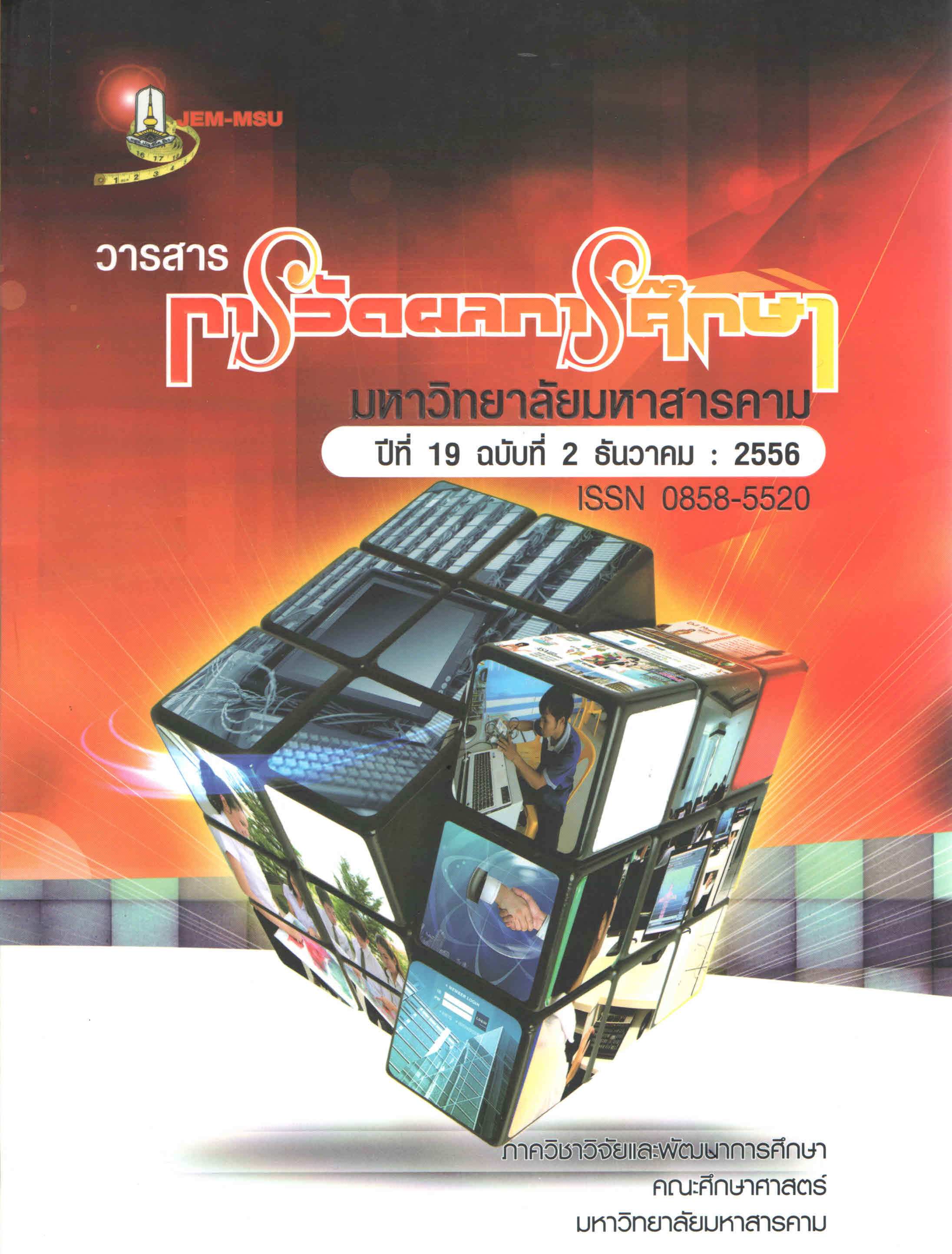Factors that affect the learning of the student teachers in Si Sa Ket province.
Main Article Content
Abstract
Educational reform requires a profound qualitative change sides. In particular, the
development of quality teachers.In teaching a variety of factors that affect the learning of students
is important. This research aims to develop and validate the structural equation model of factors
that affect the learning of students is important. The sample used in this study include teachers
under the Elementary Office Sisaket 874 people were selected by multistage (Multi - Stage
Random Sampling).
Instruments used to collect data and measure the number of 1 to 5, now includes a
measure achievement motivation, 30 and the discrimination (rxy) from 0.447 to 0.787 for reliability
was .959 attitude towards innovation. 15 and the discrimination (rxy) from 0.327 to 0.825 for
reliability was 0.939 for the knowledge management of 30 discrimination (rxy) from 0.563 to 0.831
for reliability was .970 leadership by the changes. management, 20 and the discrimination (rxy)
from 0.668 to 0.897 for reliability was 0.974 and the behavior of learning that focuses on students
as the number 45 and has authority over (rxy) from 0.431 to 0.731 for the believe. The reliability
was 0.968 for statistical analysis including mean, standard deviation. Using descriptive statistics.
Analysis of multiple correlation coefficient (Multiple Correlation Analysis) for the confirmatory
factor analysis (CFA) validity of structural equation modeling using Mplus.
The research results were as following:
The results of the analysis of the factors that affect the learning of students is
important. Models were fit to the empirical data. By considering the IOC to include . Chi-square is
equal to 204.943 degrees of freedom (df) 200 is statistically significant (p - value) is 0.390 analysis
of the confirmatory factor analysis (CFA) was 1.000 and the index level as a reference standard
(TLI. ) equal to 0.999 index root square mean difference estimate (RMSEA) was 0.005 standard
index, the root mean square of the residual (SRMR) was .034 and the / df = 1.025 in the whole of
the model parameters. notice of latent behavioral learning that focuses on students as important
a factor as possible is to encourage the students to recognize that (0.801) observed variables to
the latent achievement motivation is the factor most. Their skills in the system (0.811) observed
variables to the latent attitude towards innovation is the factor most likely to have feelings for the
innovation (0.609) observed variables to the latent variables of knowledge management. factor is
the most valuable knowledge to maximize (0.739) of the latent variables observed by the
leadership of the executive is the most valuable factor. Stimulating intellectual (0.811) latent
variables in the model with 4 variables could account for the 86 percent, and the estimated effect
size of direct and indirect effects of variables in the structural equation model factors affecting the.
learning that focuses on students is significant, as shown below. Achievement motivation has a
direct effect on behavior management, student learning is important. Statistically significant at
the .01 level with effect size 0.701 attitudes toward the use of innovative, direct influence on
behavior management, student learning is important. Statistically significant at the .01 level with
size .411 influenced by changes in executive leadership. Direct influence on behavior management,
student learning is important. Statistically significant at the .01 level with effect size 0.112, the
knowledge management has a direct influence on behavior management, student learning is
important. Statistically significant at the .01 level with effect size 0.025, respectively.
Article Details
The content and information contained in the published article in the Journal of Educational Measurement Mahasarakham University represent the opinions and responsibilities of the authors directly. The editorial board of the journal is not necessarily in agreement with or responsible for any of the content.
The articles, data, content, images, etc. that have been published in the Journal of Educational Measurement Mahasarakham University are copyrighted by the journal. If any individual or organization wishes to reproduce or perform any actions involving the entirety or any part of the content, they must obtain written permission from the Journal of Educational Measurement Mahasarakham University.


